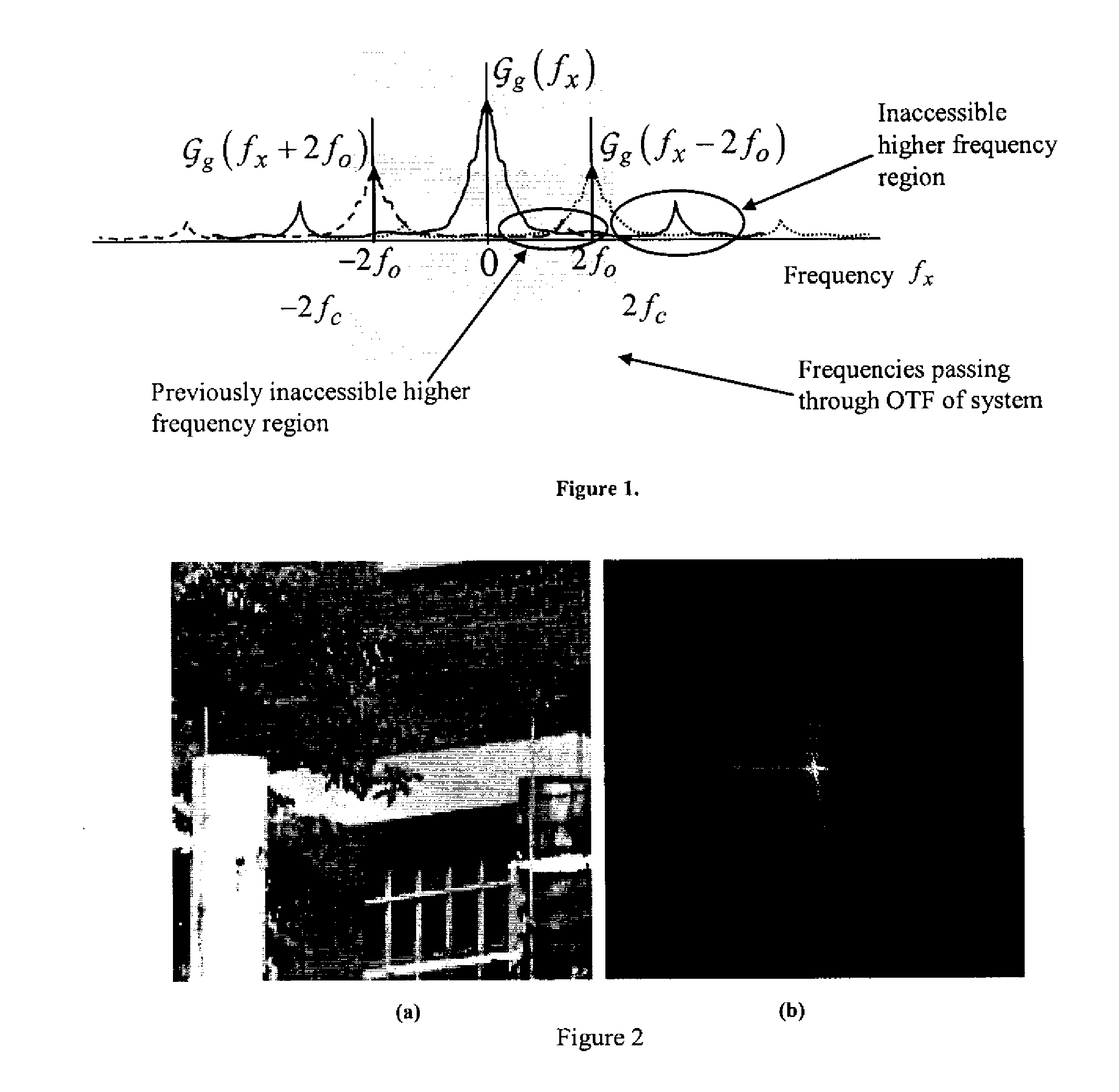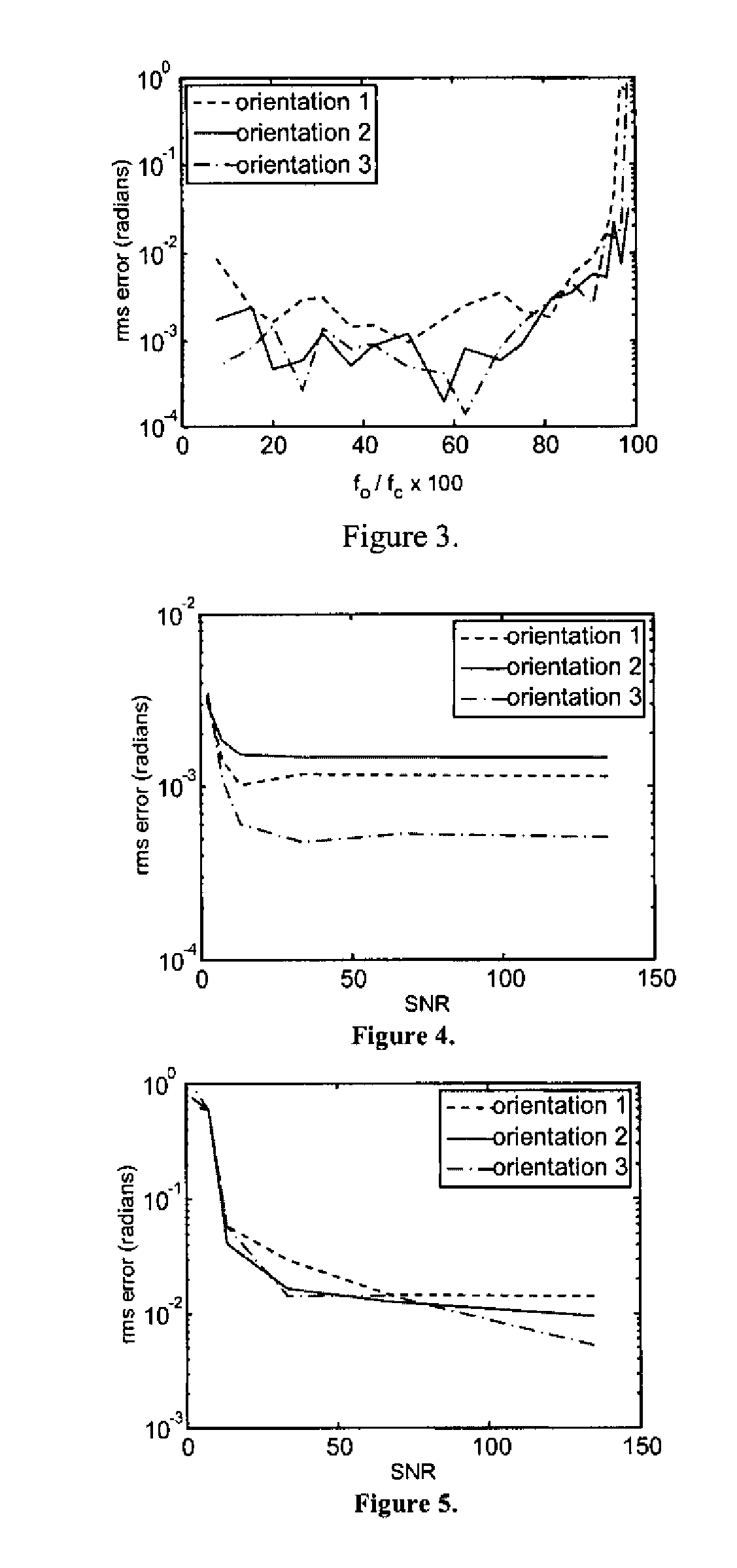Structured illumination for imaging of stationary and non-stationary, fluorescent and non-fluorescent, objects
- Summary
- Abstract
- Description
- Claims
- Application Information
AI Technical Summary
Benefits of technology
Problems solved by technology
Method used
Image
Examples
Embodiment Construction
[0053]Preferred embodiments of the present invention will now be set forth in detail with reference to the drawings, in which like reference numerals refer to like elements or steps throughout.
[0054]First, superresolution with sinusoidal illumination in the incoherent case will be considered. Here we assume interaction for light absorption and emission linear in intensity. We demonstrate the case of incoherent illumination such as a metal halide lamp and incoherent fluorescent emission. The sinusoidal pattern is produced by a grating in the illumination path.
[0055]The phase estimation analysis which follows is also applicable to the case where a coherent laser illumination is used to project sinusoidal fringes on a fluorescent object. Our method should also be valid for coherent illumination and coherent imaging which is the case of non-fluorescent objects under coherent laser fringe illumination.
[0056]Images are formed in the following manner. Assume a vertical sinusoidal illuminat...
PUM
 Login to view more
Login to view more Abstract
Description
Claims
Application Information
 Login to view more
Login to view more - R&D Engineer
- R&D Manager
- IP Professional
- Industry Leading Data Capabilities
- Powerful AI technology
- Patent DNA Extraction
Browse by: Latest US Patents, China's latest patents, Technical Efficacy Thesaurus, Application Domain, Technology Topic.
© 2024 PatSnap. All rights reserved.Legal|Privacy policy|Modern Slavery Act Transparency Statement|Sitemap



